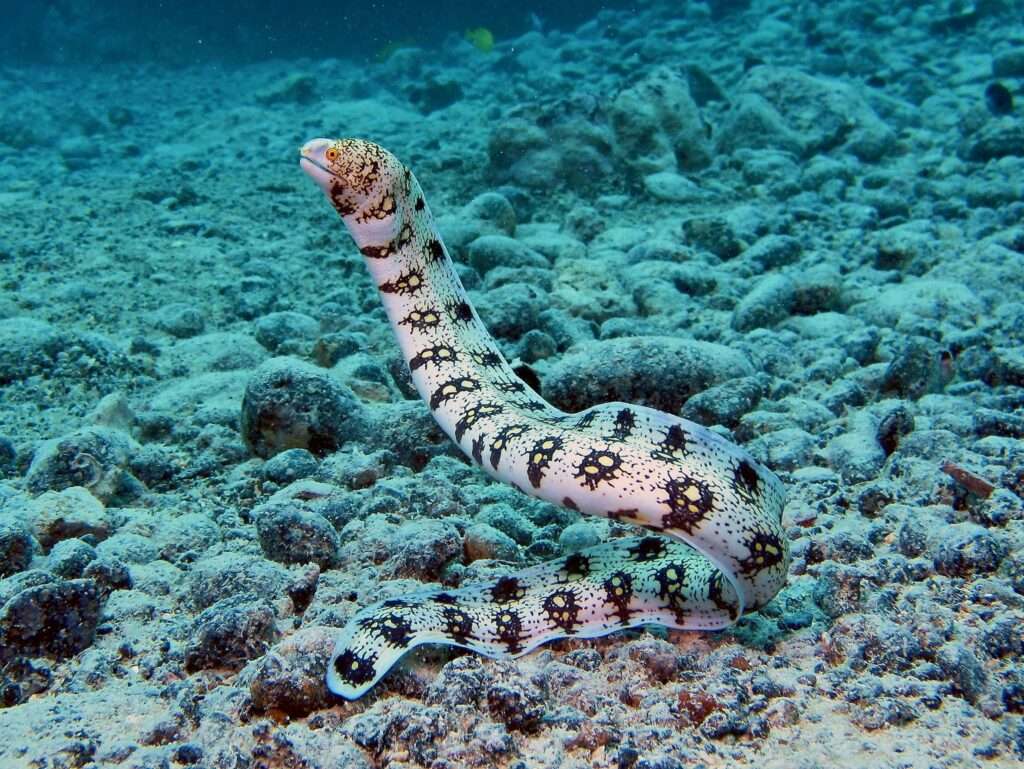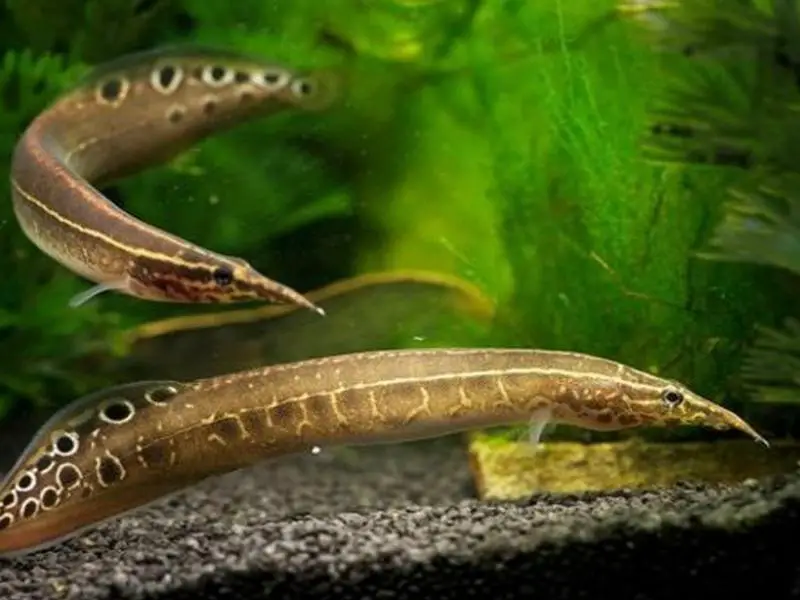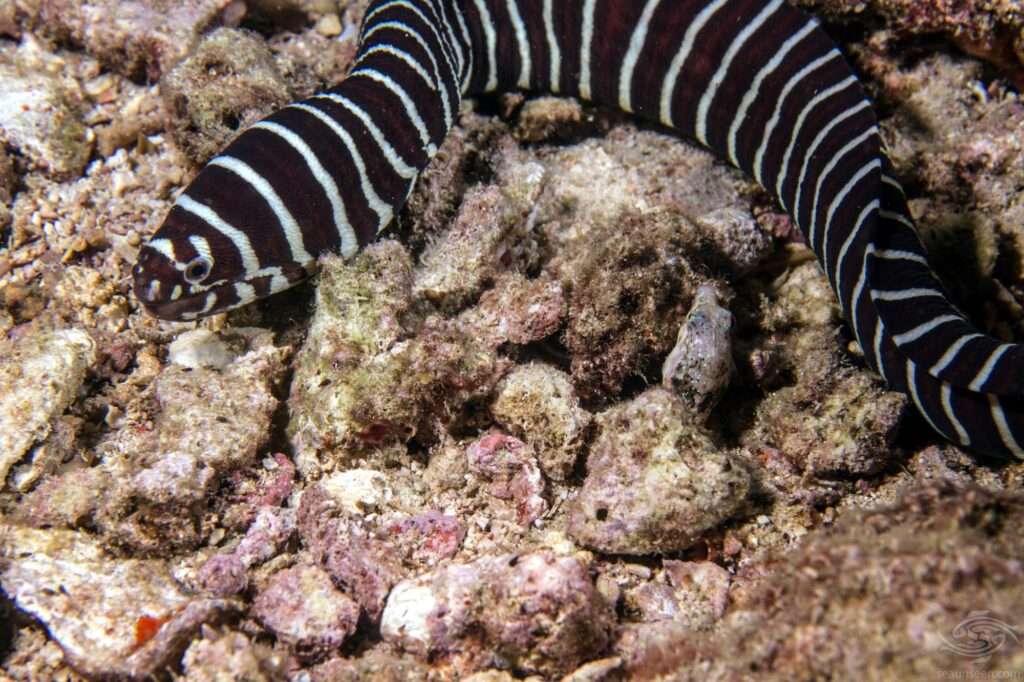
An excellent eel for beginners are snowflake moray eels. They can even be kept alongside many common community fish because they are hardy, keep to a small size, and feed voraciously. Additionally, they have stunning colors and are friendly fish. It makes sense why people choose them as aquarium pets.
They can be found residing in reefs in the Indo-Pacific, along the western coasts of the United States, Mexico, and Central America, as well as by Hawaii. They are indigenous to sections of the Pacific Ocean. Although they can grow as long as 4 feet, they normally reach a length of 2 to 3 feet. The snowflake eel is distinguished by its distinctive pattern, which consists of a silvery-white body with striations of dark brown to black.
Habitat
From Hawaii south to Australia, west through the Indo-Pacific islands to the East Indies, and across the Indian Ocean to the coast of Africa, the snowflake eel lives in caves and crevices all throughout the Indo-Pacific reefs.
Traits
The bodies of snowflake eels are decorated with a pattern that looks like numerous distinct snowflakes. Its body is white or cream-colored with one or two yellow spots scattered throughout black dendritic or teeth-like patches on the surface. The snowflake moray eel has yellow markings on its head and yellow eyes. This moray’s teeth are ideal for hunting crustaceans. The snowflake moray eel’s conical teeth are useful for crushing invertebrate exoskeletons. In the wild, larger snowflake moray eels typically consume more fish.

Diet Habits
The Snowflake Eel doesn’t eat fish, unlike the majority of Moray Eels. Freshwater feeder fish are therefore a bad idea. Since store-bought feeder fish are contaminated with bacteria and parasites that they pass on to your predatory fish, they are still a horrible option.
Instead, go around the fresh and frozen sections of your neighborhood grocery store for delectable invertebrates like squid, octopus, clams, crab, and shrimp. They love to crunch on mussels, clams, and crabs, and it’s even better if you can find live ones at the seafood counter or on the beach!
Snowflake Eels need to be fed occasionally each week, but not every day. With a day to digest between each feeding, three to four times is excellent. Snowflake eels are just like Moray eels in that they occasionally go on hunger strikes. It might opt not to eat for a week or longer. But be prepared each day with food because it won’t be fussy when it’s time to eat.
Keeping as Pet in Aquarium
As long as you can provide them with the squid, shrimp, and other food they love, snowflake eels make excellent pets. A snowflake eel can quickly outgrow a tiny aquarium, so start off with a big tank that can hold at least 50 gallons per eel. The snowflake eel is typically disease-resistant and adapts well to aquarium conditions. In the initial weeks of settling into a new aquarium, the snowflake moray eel is frequently a little reserved. Give it a lot of places to hide and space to move around in. Give the tank at least one cave that is the right size. If at all possible, provide it access to different caverns, and design the aquarium such that it can move from one side to the other without being seen. Due to the size and power of this eel, rock formations should be packed tightly to avoid constructions being knocked down.
This eel is extremely resilient, but it also likes to get away, therefore a tightly fitting canopy is best. The majority of eels who do perish (or disappear) in aquariums kept by hobbyists were victims of inadequately sealed tanks. Make sure all of these holes are completely closed since the snowflake moray eel can locate and wriggle out of the smallest hole in the aquarium top. They may slip out and enter filter bags or the aquarium sump through PVC tubing. The size of a Snowflake Eel is one of its greatest features. They are among the smallest species in the world, only growing to a maximum length of about 2 feet.
Table





